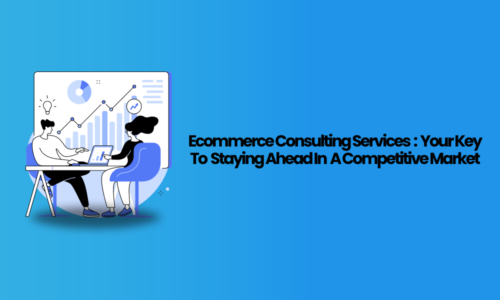In the world of ecommerce, the checkout process is a critical touchpoint that can make or break a sale. A seamless and efficient checkout experience is essential for converting browsing visitors into paying customers. This is particularly true for those looking to buy ecommerce business UK, where the competitive market demands excellence in every aspect of the customer journey. In this blog, we will explore the key elements that contribute to a frictionless checkout experience and how you can implement these strategies to enhance your ecommerce business.
Understanding the Importance of a Smooth Checkout
The checkout process is the final hurdle in the customer’s purchasing journey. A complicated or slow checkout can lead to cart abandonment, costing businesses significant revenue. According to Baymard Institute, the average cart abandonment rate is around 69.57%. This staggering statistic highlights the importance of optimising the checkout process to reduce friction and improve conversion rates.
Key Elements of a Frictionless Checkout Experience
Simplified Navigation
A cluttered and confusing checkout page can deter customers. Simplifying the navigation involves:
Clear Progress Indicators: Use a progress bar to show customers where they are in the checkout process. This reduces anxiety and helps them understand the remaining steps.
Minimalist Design: Remove unnecessary elements that can distract or confuse the customer. Keep the focus on completing the purchase.
Guest Checkout Option
Forcing customers to create an account before purchasing can be a significant barrier. Offering a guest checkout option allows customers to complete their purchase quickly without the need for an account. This is particularly beneficial for first-time customers who may not be ready to commit to an account.
Mobile Optimization
With the increasing use of mobile devices for online shopping, ensuring your checkout process is mobile-friendly is crucial. This includes:
Responsive Design: Ensure the checkout page adjusts seamlessly to different screen sizes.
Easy Form Filling: Optimise forms for mobile users with larger fields and touch-friendly buttons.
Multiple Payment Options
Offering a variety of payment methods caters to the preferences of different customers. Common options include:
Credit and Debit Cards: Ensure that major card types are accepted.
Digital Wallets: Integrate options like PayPal, Apple Pay, and Google Pay.
Buy Now, Pay Later: Services like Klarna and Afterpay can attract customers looking for flexible payment solutions.
Autofill and Address Validation
Speeding up the checkout process can be achieved through:
Autofill Features: Allow customers to use saved information for faster form filling.
Address Validation: Implement address validation tools to reduce errors and ensure accurate shipping details.
Clear and Transparent Pricing
Unexpected costs are a primary reason for cart abandonment. Ensure pricing is transparent by:
Displaying Total Costs Early: Show all costs, including shipping, taxes, and fees, as early as possible in the checkout process.
Providing Shipping Options: Offer different shipping methods and clearly display their costs and delivery times.
Strong Security Measures
Building trust with your customers is essential for a smooth checkout experience. Implementing robust security measures can help:
SSL Certificates: Ensure your website is secure with SSL certificates, displaying trust signals like padlocks.
Secure Payment Gateways: Use reputable payment gateways that comply with industry security standards.
Fraud Protection: Implement measures to detect and prevent fraudulent transactions.
Efficient Customer Support
Providing accessible customer support during the checkout process can help resolve any issues promptly. This can be achieved through:
Live Chat Support: Offer real-time assistance to address customer queries and concerns.
Comprehensive FAQ Section: Provide answers to common questions related to the checkout process.
Implementing and Testing Checkout Improvements
Improving the checkout experience is an ongoing process that requires regular testing and optimization. Here are steps to ensure continuous improvement:
Analyse User Behaviour
Use analytics tools to track user behaviour during the checkout process. Identify common drop-off points and areas of friction. Understanding how customers interact with your checkout page can provide valuable insights for improvement.
A/B Testing
Conduct A/B tests to compare different versions of the checkout page. Test elements such as layout, form fields, and call-to-action buttons to determine what works best for your audience. A/B testing helps in making data-driven decisions to enhance the checkout experience.
Gather Customer Feedback
Solicit feedback from customers who have completed or abandoned their checkout. This can be done through surveys or follow-up emails. Direct feedback can uncover specific pain points and provide ideas for improvement.
Monitor Performance Metrics
Keep an eye on key performance metrics such as cart abandonment rate, conversion rate, and average order value. Regularly reviewing these metrics can help measure the impact of your changes and identify areas that need further attention.
Real-World Examples of Frictionless Checkout
Amazon’s One-Click Checkout
Amazon’s one-click checkout is a prime example of a frictionless checkout experience. By allowing customers to purchase items with a single click, Amazon has streamlined the process and significantly reduced cart abandonment. This convenience has set a benchmark for ecommerce businesses worldwide.
Grozeo’s Checkout Process
Grozeo provides a robust and customizable checkout process for ecommerce businesses. With features like multiple payment options, address autofill, and mobile optimization, Grozeo ensures a smooth and efficient checkout experience for its users.
Conclusion
Creating a frictionless checkout experience is essential for the success of any ecommerce business. By focusing on elements such as simplified navigation, guest checkout, mobile optimization, multiple payment options, and strong security measures, you can significantly improve the checkout process and boost conversion rates. For those looking to buy ecommerce business UK, implementing these strategies can provide a competitive edge in the market. Remember, the key to a successful checkout experience is continuous testing, optimization, and a deep understanding of your customers’ needs and preferences.
In a highly competitive ecommerce landscape, a frictionless checkout process not only enhances customer satisfaction but also drives loyalty and repeat business. By prioritising the checkout experience, you can create a seamless journey that encourages customers to complete their purchases and return for more.




